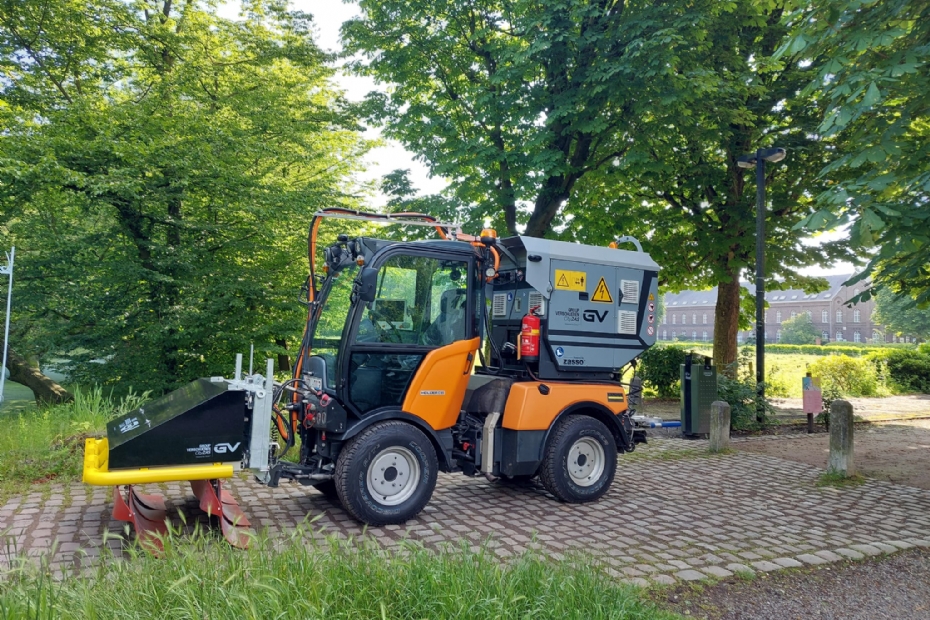A full charge of electricity for unwanted green |
|
| GARDEN AND PARK TECHNOLOGY |
|
|
|
|
 |
| 79 sec |
Electric weed control with the CityZAS from Group Verschueren: fast, quiet, and residue-free
"Electric weed control can be compared to lightning striking a tree, only on a smaller scale," says Jeroen van de Ven, director of Intrak. "Electricity follows the path of least resistance. A plant in dry soil contains more moisture than the soil itself. Moisture conducts electricity, and electricity seeks the root. This makes the method many times more effective than other forms of weed control."
 |
As early as the nineteenth century, this weed control method was used along railways in the United States. Especially the less frequently used railway lines were quickly overgrown. A steam engine powered a generator to produce electricity. In the twentieth century, this technique gave way to chemical use, which was widely applicable, including in agriculture.
In the 1970s, the popular - and later infamous - glyphosate (Roundup) was introduced. In the Netherlands, Member of Parliament Grashof blocked its use in 2011 by submitting a motion against chemical weed control on paved surfaces. This led to a ban on chemical agents, with an exception for agriculture. As a result, municipalities and private individuals had to look for alternative ways to deal with unwanted vegetation.
|
|
"A narrower machine was needed that could fit on a tool carrier."
| |
|
Ideal for urban environments
Van de Ven: "That's why we started selling the British-made Rootwave in 2018 — an electric weed killer for selective treatment of root weeds. The method worked perfectly, but the market demanded machines with higher capacity. The Swiss manufacturer Zasso had developed a three-meter-wide electrocution machine intended for agriculture. Not usable in built-up areas, of course — so a smaller machine was needed, one that could be mounted on a tool carrier. Group Verschueren took up the challenge, entered into a partnership with Zasso, and combined the two machines. That's how the CityZAS was launched last year."
|
|
"The first machines are now in use, and users are extremely enthusiastic."
| |
|
Cost-saving and less disruptive
Because the CityZAS attacks weeds down to the root, far fewer treatments are needed. "This makes the machine cost-effective and less disruptive to the surroundings. Moreover, it uses less fossil energy and leaves no residue at the treatment site, in the air, or in surface water — unlike chemical products. The first machines are now operating, and users are thrilled."
 | | Jeroen van de Ven |
|
|
This article was originally published on October 6, 2025, on the website](https://www.stad-en-groen.nl/article/51220/een-volle-bak-stroom-voor-ongewenst-groen]website) of Stad + Groen.
| LOG IN
with your email address to respond.
|
|
|
| There are no comments yet. |
|
| |
Anyone can place small ads for free through their own account.
Place a free ad
|
|
|
|